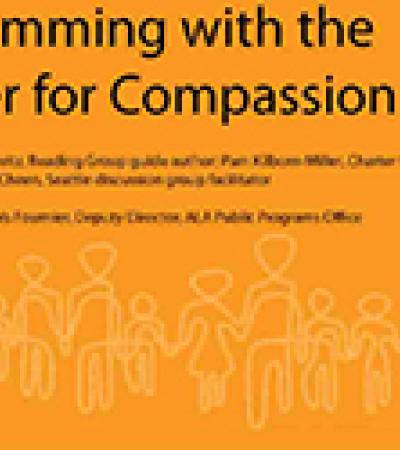Even though library programming is widespread, programmers still find themselves faced with having to persuade the library administration, board members, colleagues, and even patrons and the public of its value. As different agencies and library departments compete for limited funding, it’s important to be able to articulate why cultural programming is worth the investment.
One of the strongest arguments is that programming puts the library in the spotlight, and is a way to attract additional funding and support rather than a drain on the library budget. Programs that reach beyond the library’s traditional services and draw diverse audiences are the ones most likely to get coverage in local media and garner other types of attention.
An interesting case in point is the recent allocation of more than $4 million to libraries in Minnesota specifically for cultural programming as part of statewide revenue dedicated to the arts and the environment. The funds could not be used for general library services, so if a library wasn’t in a position to present programming, it didn’t have access to the funds.
Don’t think of making a case as an extra job—it’s really the résumé for your library’s programming, a way to sell people on its strengths and build a stronger base for more and better programs to come. Use this outline to get started:

• Summarize your current programming—highlight a couple of your biggest “names,” do a table or chart of audience demographics, list your community partners/sponsors.
• Diagram the resources that come to the library a result—list any grants received, other contributions, in-kind support.
• Propose future programming—demonstrate what you can do with additional resources.
• Present your case—think about who you need to convince and tailor the presentation for each audience; use graphics, photos, make it as powerful and persuasive as possible.
This is an ongoing process. You’ll continue to refine your case as time goes on, using new examples drawn from your expanding programming base. At first, this might be mostly a matter of convincing internal stakeholders, such as the library board and administration. As your programs grow, you’ll find yourself working with outside partners and funders, community groups, school and colleges, and all kinds or organizations.
One of the most important groups to enlist are public officials at the state and local level. Use any opportunity to present your case to these key decision-makers, and don’t limit yourself to formal presentations in their offices—invite them to the library, especially to attend programs, and meet with authors or other presenters. Asking the mayor to a small private dinner with a best-selling author or having your local legislator introduce a celebrity speaker at a library program “makes your case” in the best light possible!
Editor’s Note: The ALA Public Programs Office evaluates library public programming initiatives to determine the scope and impact of the programs on the library, community and nation. In this section you will find information created and collected by the ALA Public Programs Office to help library administrators and the public understand the impact of programming initiatives. Some of the ideas and statistics can be used to help libraries make the case for increased programming support and funding in their libraries and communities.
• The Benefits of Public Programming for Participating Libraries and Audiences, by the ALA Public Programs Office staff.
Cultural Programming for Adults: A Survey Report, prepared by Debra Wilcox Johnson, Ph.D., 1999. Report of a survey conducted by the ALA Public Programs Office and Office for Research and Statistics in partnership with the Library Research Center, Graduate School of Library and Information Science, University of Illinois, Champaign-Urbana, and funded by Wallace-Reader’s Digest Funds.





